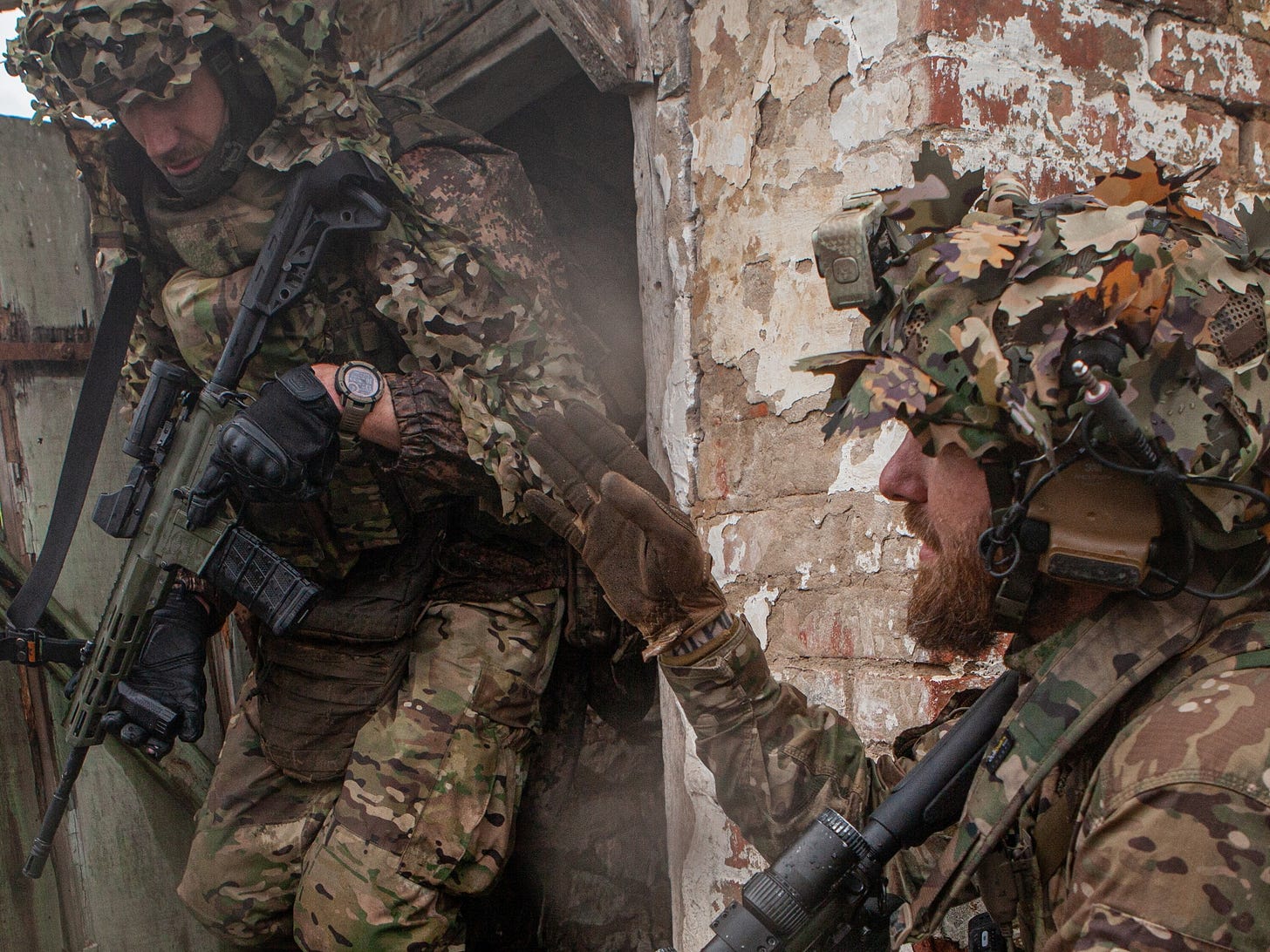Russian Marines and Their Tanks Have Massed Near Pokrovsk. Why Aren't They Attacking?
Ukraine's drones have spooked the marine commanders.
Five Russian marine regiments and brigades have taken up positions a few miles behind the front line east of the fortress city of Pokrovsk in eastern Ukraine’s Donetsk Oblast.
It’s a powerful force, on paper—with well more than 10,000 marines and potentially hundreds of armored vehicles including tanks. But intercepted communications indicate the marine commanders are spooked by the sheer quantity of Ukrainian drones in the area, and are hold off on any large-scale attacks for now.
That doesn’t mean other Russian forces aren’t on the move east of Pokrovsk, one of the last major urban strongholds between hundreds of thousands of Russian troops and the so-called “fortress belt” threading from Kramatorsk to Sloviansk in western Donetsk.
If the fortress belt falls, the whole oblast may fall—and Russia’s conquest of Ukraine’s Donbas region will be complete after more than a decade of brutal fighting. Capturing Pokrovsk is still Russia’s top priority in the 43rd month of its wider war on Ukraine.
Those Russian reinforcements hunkering down just south of the porous line of contact east of Pokrovsk are witness to some of the most intensive fighting in many months as two or more Russian field armies hurl their infantry at a large Ukrainian force anchored by the new 1st Azov Corps and supported by thousands of tiny drones.
In all, three Russian field armies and corps—the 8th and 51st Combined Arms Armies and the 68th Army Corps—face around nine Ukrainian regiments and brigades plus a few separate battalions. Counting the newly arrived marines, there may be around 80,000 Russians and half as many Ukrainians along a stretch of the front line that’s no longer than 20 miles.
That’s a lot of troops. They’ve piled up as the fight for Pokrovsk—which kicked off more than a year ago—has intensified in recent months.
Keep reading with a 7-day free trial
Subscribe to Trench Art to keep reading this post and get 7 days of free access to the full post archives.


